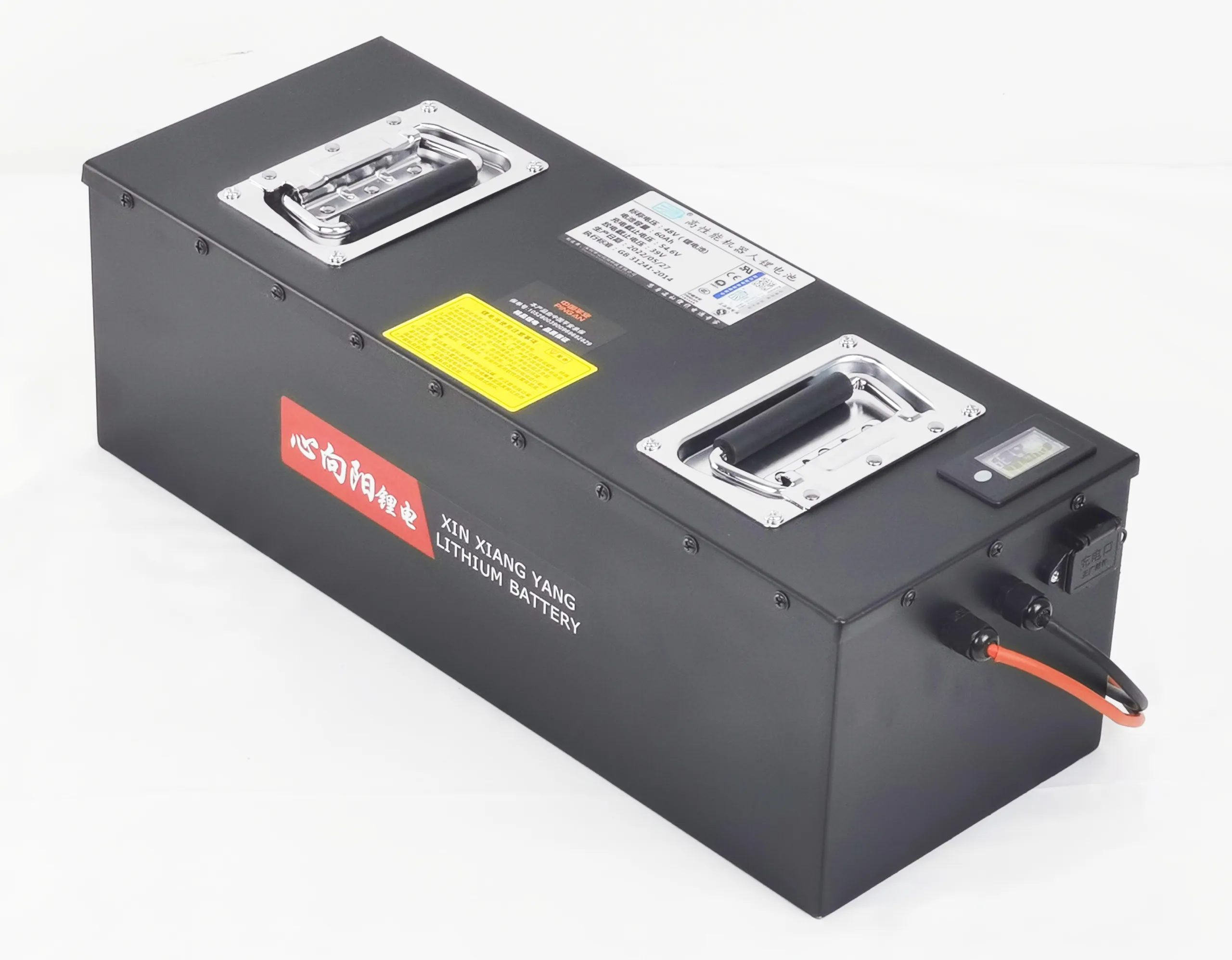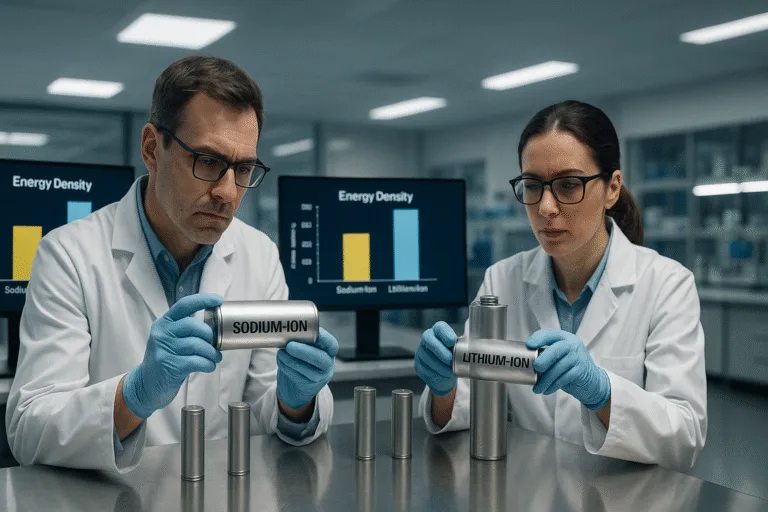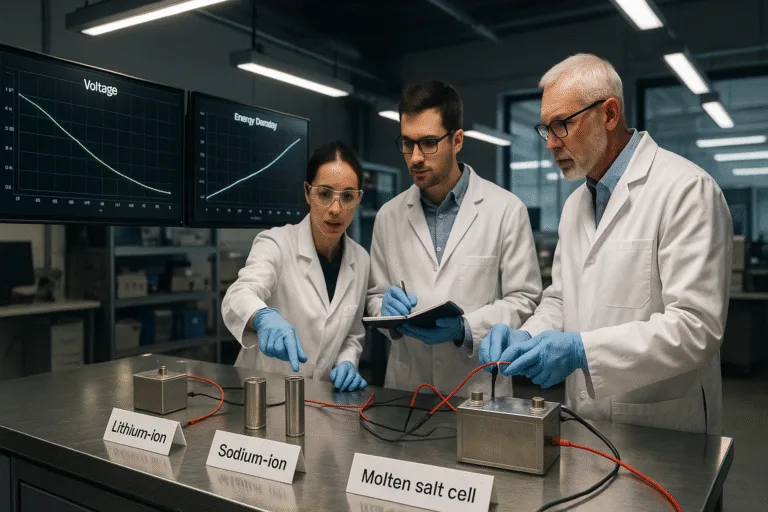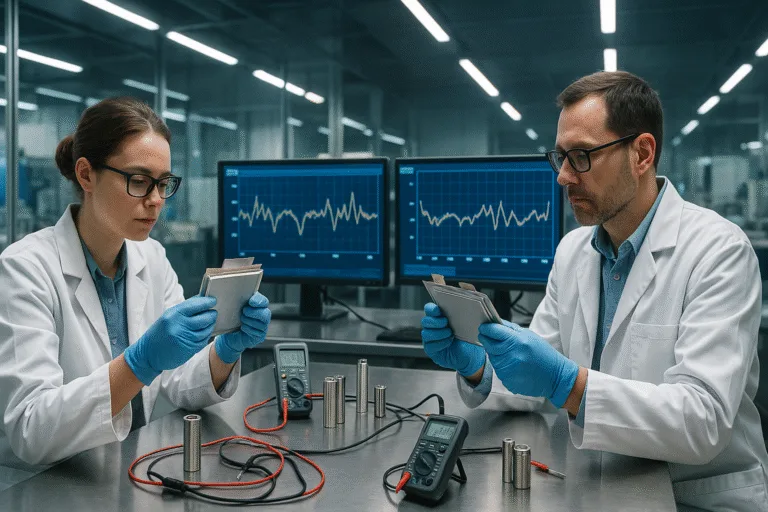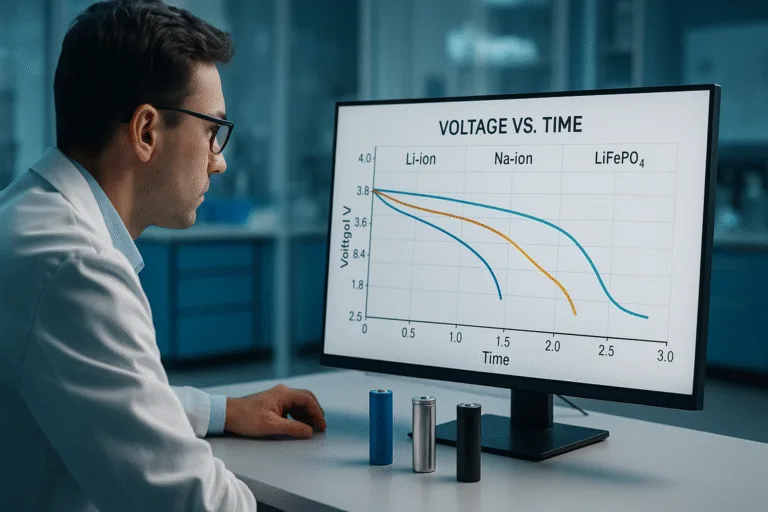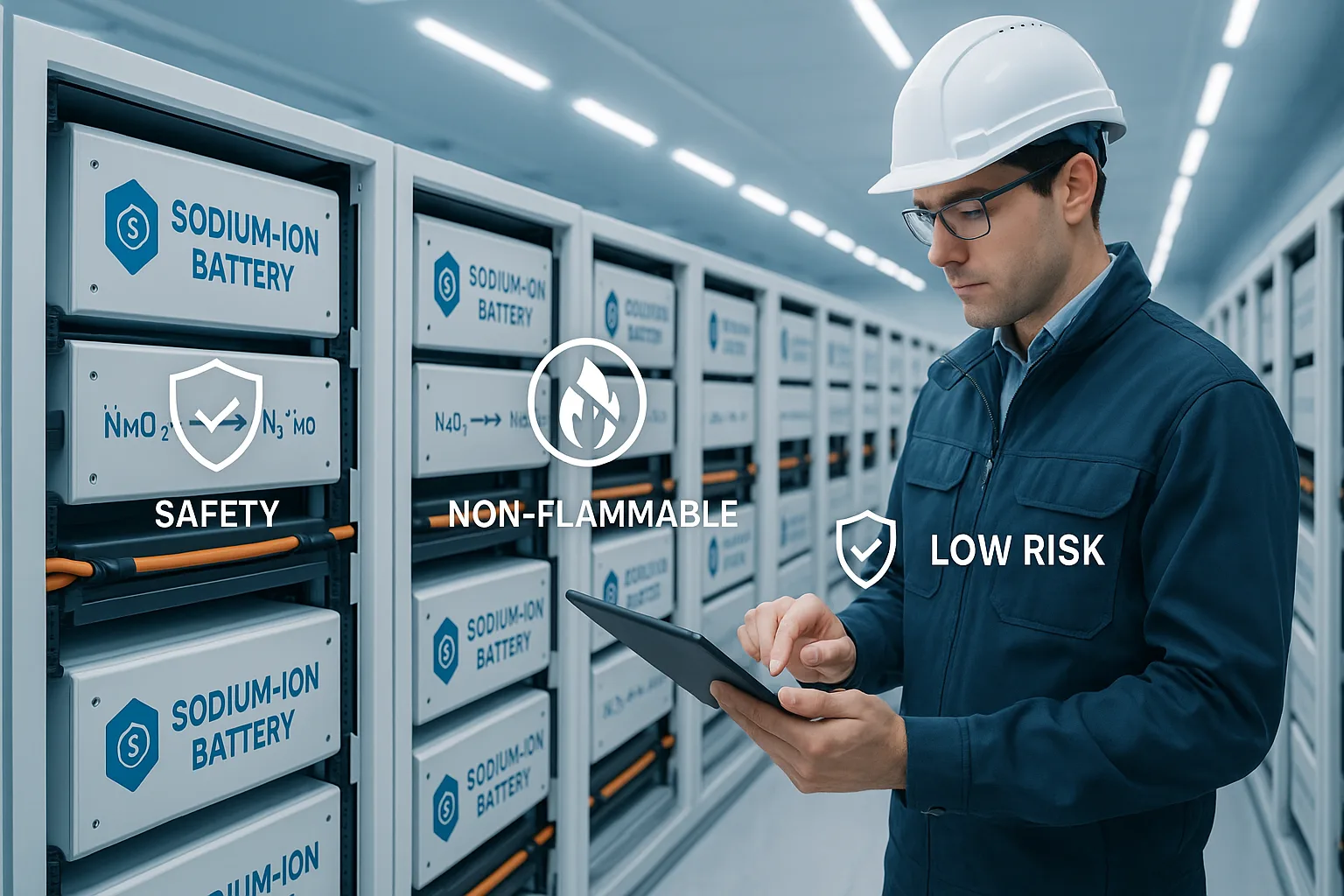
If you’re considering sodium-ion batteries, safety is likely one of your top concerns. Are they safer than lithium-ion? Do they pose any fire risks?
Yes, sodium-ion batteries are generally safe to use. They are chemically more stable than lithium-ion batteries, have a lower risk of thermal runaway, and are less flammable, making them a safer choice for many applications.
I’ve seen increasing interest from energy storage clients switching to sodium-ion systems specifically because of safety improvements. Let’s take a deeper look at why.
Do Sodium-Ion Batteries Pose a Fire Risk Like Lithium-Ion Batteries?
This is one of the most common safety questions when comparing battery chemistries.
No, sodium-ion batteries1 have a much lower fire risk2 than lithium-ion batteries. Their materials are more thermally stable and less reactive, making them less likely to catch fire or overheat.
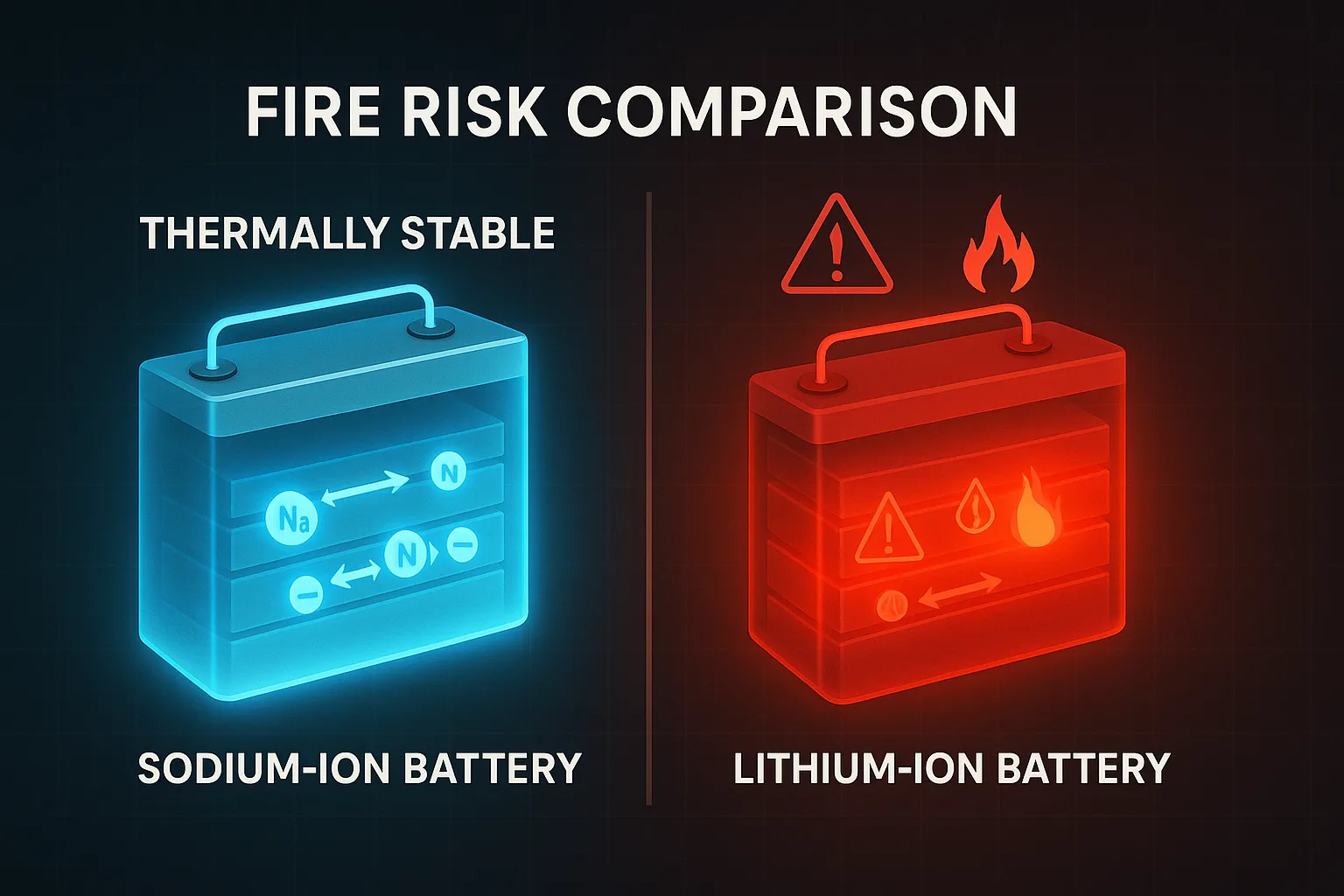
Fire Safety Advantages of Sodium-Ion
Here’s why sodium-ion batteries are safer:
- Non-flammable materials: Most sodium-ion designs avoid volatile electrolytes.
- Stable operating temperature: Sodium-ion chemistry remains stable even at higher temperatures.
- Lower energy density: While it reduces performance, it also reduces fire risk.
| Feature | Sodium-Ion | Lithium-Ion |
|---|---|---|
| Thermal Stability | High | Moderate |
| Flammable Electrolyte | Less likely | Common |
| Fire Risk Under Abuse | Low | High |
This makes sodium-ion batteries ideal for large-scale or indoor use where fire safety is critical.
Can Sodium-Ion Batteries Explode Under Certain Conditions?
Worried about rare but catastrophic battery failures?
While no battery is 100% risk-free, sodium-ion batteries3 are far less likely to explode than lithium-ion batteries. Their stable chemistry and non-reactive materials reduce the likelihood of catastrophic thermal events4.
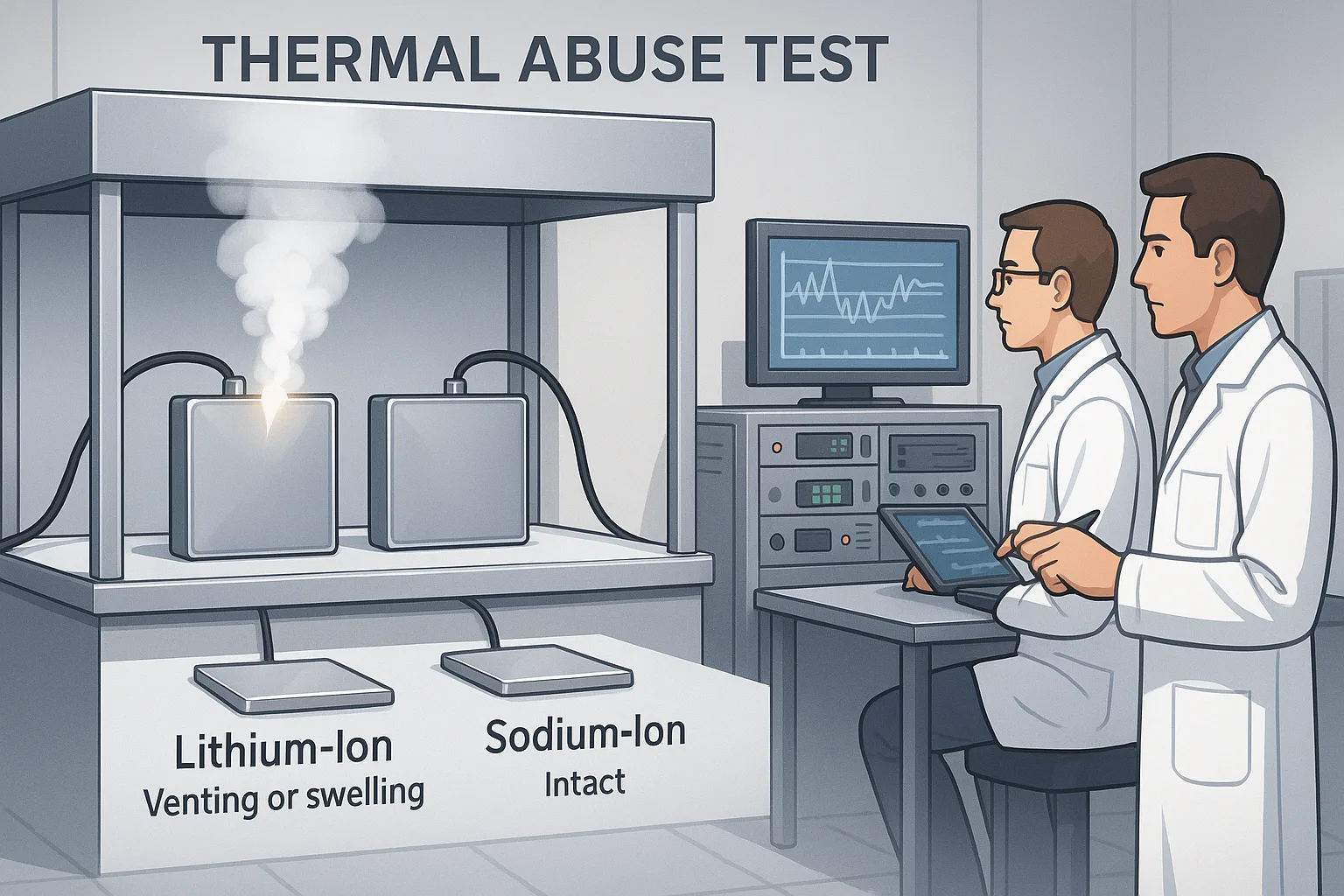
Why Explosion Risk Is Low
Explosions usually happen due to internal short circuits, mechanical damage, or overheating. Sodium-ion batteries are designed to minimize these risks:
- Wider safe operating range
- Minimal gas buildup during cycling
- Less aggressive thermal reactions
Proper packaging, BMS protection, and standard handling practices make the explosion risk5 negligible under normal use.
What Is the Environmental Impact of Sodium-Ion Battery Production and Disposal?
Concerned about the footprint of battery manufacturing? That’s a valid question.
Sodium-ion batteries have a smaller environmental impact than lithium-ion batteries because they avoid scarce or toxic materials like cobalt and lithium, and rely on abundant elements such as sodium, iron, and manganese.
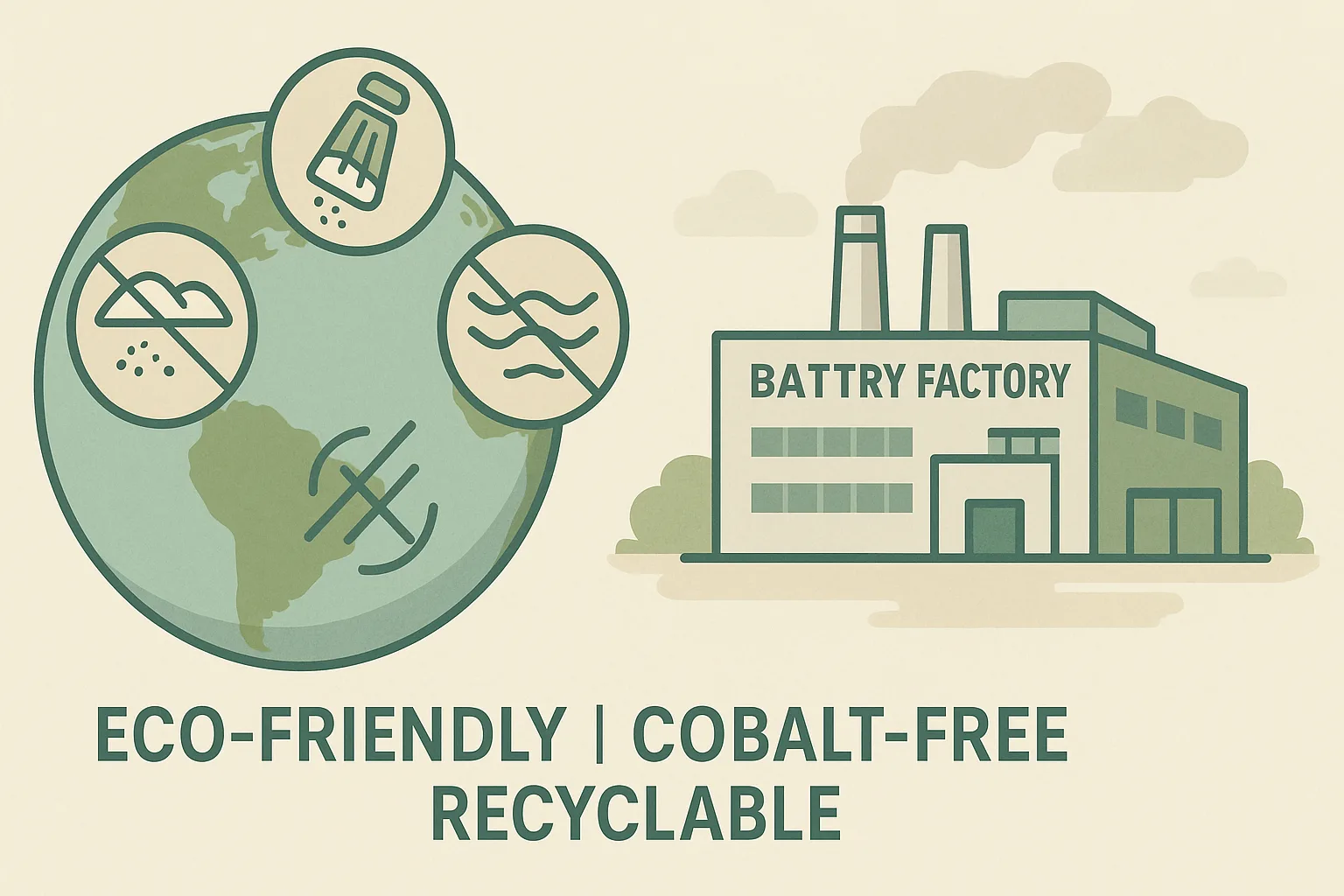
Environmental Impact Breakdown
Sodium-ion batteries are more eco-friendly for several reasons:
- Abundant raw materials: Sodium can be extracted from salt and seawater.
- No cobalt or nickel: Reduces mining-related social and environmental damage.
- Lower carbon footprint: Easier to manufacture and recycle at scale.
| Factor | Sodium-Ion | Lithium-Ion |
|---|---|---|
| Resource Availability | High (sodium, iron) | Medium (lithium, cobalt) |
| Toxic Mining Footprint | Low | High |
| Recycling Complexity | Lower | Higher |
As demand for sustainable batteries increases, sodium-ion offers a clear advantage.
How Should Sodium-Ion Batteries Be Properly Disposed Of?
End-of-life management is essential for any battery technology.
Sodium-ion batteries should be disposed of through proper recycling channels6 or returned to manufacturers. Although less hazardous than lithium-ion, they still contain chemicals and metals that shouldn’t be landfilled.
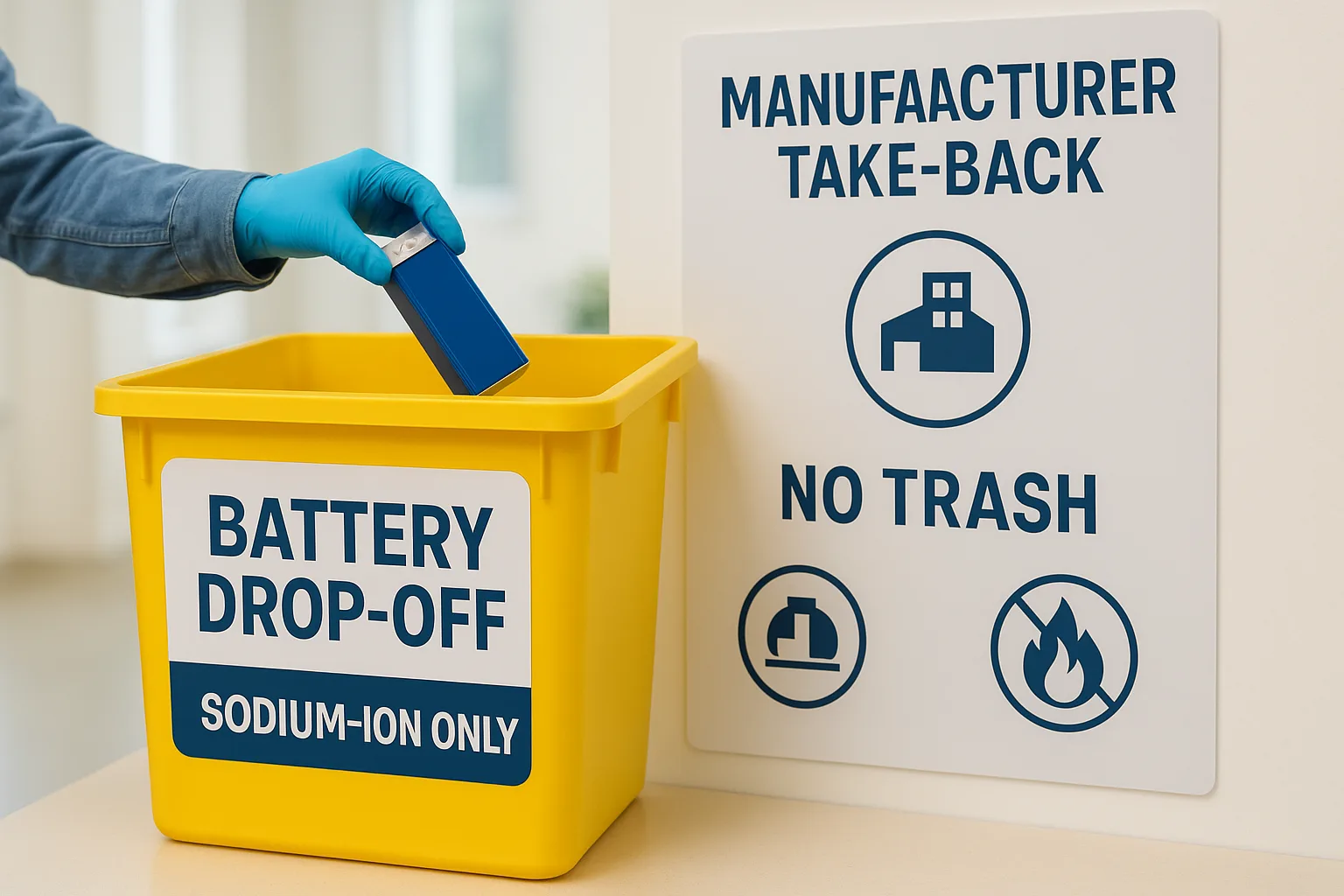
Best Practices for Disposal
Here’s how to manage sodium-ion battery disposal safely:
- Check with the supplier: Some offer take-back or recycling programs.
- Use certified e-waste centers7: Ensure safe handling of chemical materials.
- Avoid household trash: Even though they’re safer, they still require specialized disposal.
| Disposal Method | Recommended? | Notes |
|---|---|---|
| Manufacturer take-back | ✅ Yes | Ideal for large-scale systems |
| E-waste recycling center | ✅ Yes | Safe and legal option |
| Landfill or trash | ❌ No | Unsafe and environmentally harmful |
Following proper disposal protocols ensures environmental and regulatory compliance.
Conclusion
Sodium-ion batteries are a safer and more sustainable alternative to lithium-ion, with lower fire risks, minimal explosion hazards, and a gentler environmental footprint. Safe use and proper disposal make them a strong choice for future energy storage.
-
Explore the unique safety features of sodium-ion batteries that make them a safer alternative to lithium-ion batteries. ↩
-
Understanding the fire risk differences can help in making informed decisions about battery usage and safety. ↩
-
Explore the benefits of sodium-ion batteries, including their safety features and stability compared to lithium-ion alternatives. ↩
-
Understanding the causes of thermal events can help in choosing safer battery technologies and improving safety measures. ↩
-
Learn about strategies to reduce battery explosion risks, ensuring safer usage and handling of battery technologies. ↩
-
Discover reliable recycling channels for sodium-ion batteries to ensure safe disposal and minimize environmental impact. ↩
-
Find out about certified e-waste centers that handle battery disposal safely and legally, protecting the environment. ↩

